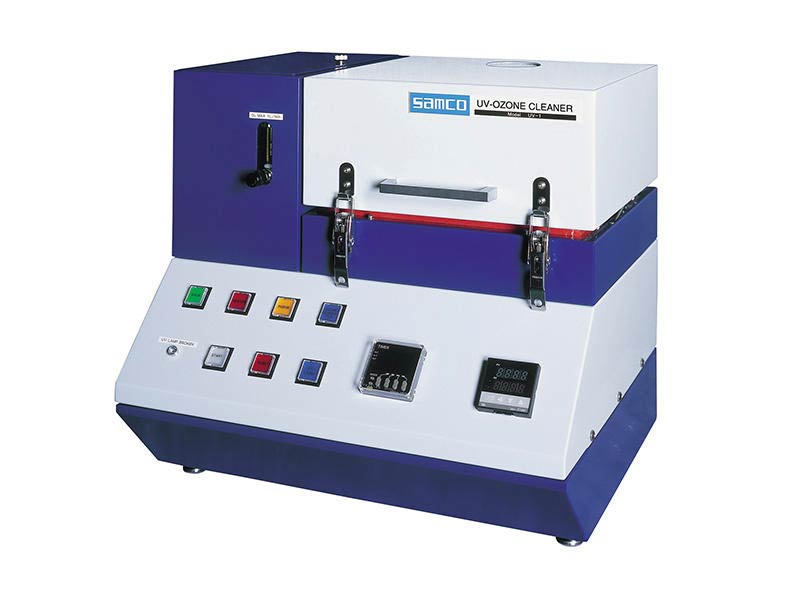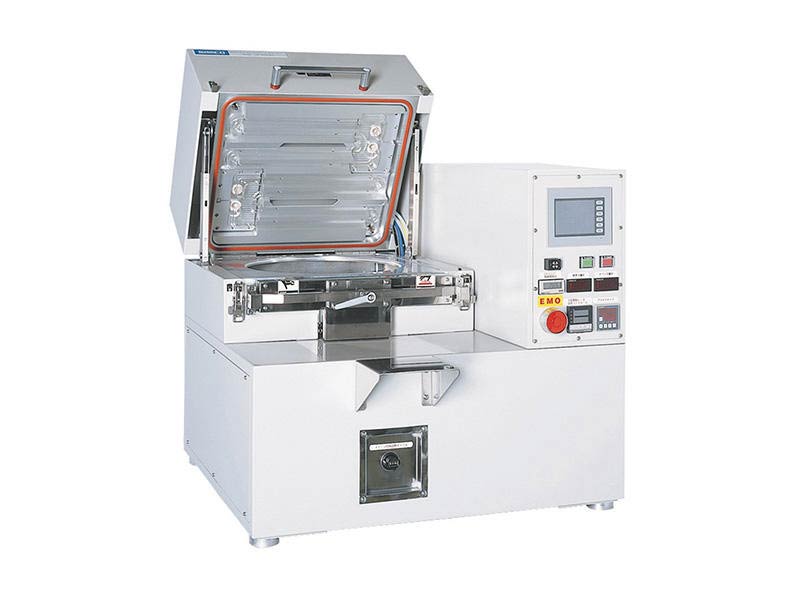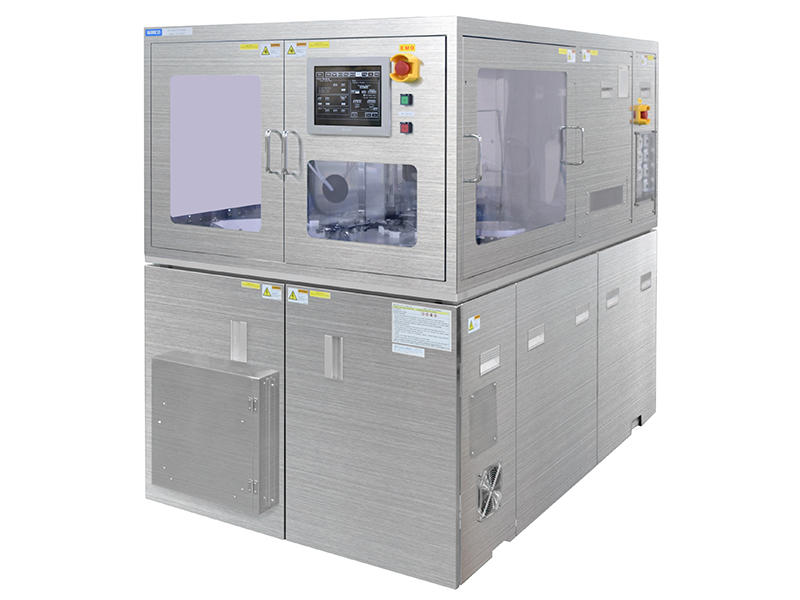UV Ozone Cleaning Systems
Samco's UV Ozone Cleaners use a unique combination of ultraviolet irradiation, ozone, and stage heating to gently, yet effectively, remove organic materials from a variety of substrates, including silicon, glass, compound semiconductors (GaN, SiC, GaAs, and InP), sapphire, ceramics, etc. Today our product line includes, compact benchtop and cassette type systems for both R&D and mass production customers.
-

UV Ozone Cleaner UV-1
Compact benchtop system
-

UV Ozone Cleaner UV-300H
Ashing rates of >200 nm/min
-

Cassette Loading UV Ozone Cleaner UV-300HC
Production system
Key Features and Benefits
Samco offers multiple UV-Ozone cleaners for R&D and production. Our systems are equipped with Stage Heating and Ozone Generator to achieve superior process performance compared to conventional UV-Ozone cleaners.
Compact tabletop UV-ozone cleaners are useful for sample preparation at space-limited lab facilities. Our open-load UV-ozone systems are capable of processing 300 mm wafers, and the tools have advantages of low physical ion and charging damage over general plasma cleaning. For production customers, cassette-to-cassette systems are available.
FAQs about UV Ozone Cleaning Systems
- What is the advantage of UV-Ozone Cleaning over Other Techniques?
- While there are options for surface cleaning and sample preparation methods, UV-ozone cleaning shows several advantages over other methods. The first is low charging damage on substrates. In the case of plasma treatment, charging damage caused by ion bombardment can be a severe challenge. It leads to degradation of electrical characteristics of devices. UV-ozone treatment offers surface treatment using oxygen radicals without plasma discharge. The second is no hazardous effluent. Wet cleaning requires effluent disposal of chemicals. In contrast to the wet cleaning method, UV-ozone treatment is a completely dry process. Our UV-ozone cleaners are equipped with an ozone killer, and exhaust ozone is decomposed inside the system. There is no need to worry about ozone hazard inside a cleanroom.
- What is UV-Ozone Cleaning used for?
- There are several applications of UV-ozone surface cleaning in material research and device fabrication. ・Surface cleaning of silicon wafers, plastic packages ・III-V compound semiconductor wafers such as GaAs and InP before MOCVD and ALD process ・Lead frame and bond pad cleaning for device packaging ・Surface modification of polymer substrates ・Surface activation ・Wettability improvement of microfluidics channels ・Adhesion improvement for direct substrate bonding such as glass, PDMS, PMMA, COC and COP ・Surface oxidation (thin oxidized layer deposition) ・Organic contamination removal ・Photoresist ashing and stripping ・UV curing, outgassing and hardbaking of photoresist ・Photoresist descum ・Cleaning of AFM tips ・Surface cleaning of Quartz Crystal Micro-balance (QCM) sensors ・Cleaning of Surface Plasmon Resonance (SPR) chips ・UV crosslinking of polymers and photoresist
- How the UV-Ozone cleaning works?
- Several factors are involved in UV-ozone cleaning for the surface chemical reaction. The first factor is UV irradiation. Ultraviolet light (UV) lamp irradiates two types of wavelength (185 and 254 nm). Each wavelength has different roles for the chemical reaction. 185 nm UV light dissociates molecular oxygen O2 into triplet atomic oxygen O(3P). Triplet atomic oxygen O(3P) combines with molecular oxygen O2 and generates ozone O3. On the other hand, 254 nm UV light dissociates ozone O3 and forms molecular oxygen O2 and singlet atomic oxygen O(1D). Singlet atomic oxygen O(1D) has strong oxidation power, and it reacts with substrate surfaces. In this reaction, the surfaces were oxidized on inorganic substrates such as silicon wafers. In the case of organic materials, chain scission of molecules happens, and organic residue contaminants are gently removed from the substrates as volatile byproduct molecules such as CO2, H2O and O2. The second factor is sample stage temperature. Stage temperature is also one of the critical factors in UV-ozone treatment. Even though 254 nm UV light dissociates ozone and forms singlet atomic oxygen, the reactive species has a short lifetime (around 10 ms). Therefore, the density of singlet atomic oxygen is a bottleneck in the UV-ozone cleaning process. The key to improving the density of the reactive species is to raise stage temperature. Thermal dissociation of ozone is accelerated at a higher temperature over 100°C, and higher density of singlet atomic oxygen is provided to sample surfaces. Adjustment of sample stage temperature works well for some applications. Photoresist ashing rate significantly increases with higher stage temperatures due to higher atomic oxygen density caused by thermal ozone dissociation.











